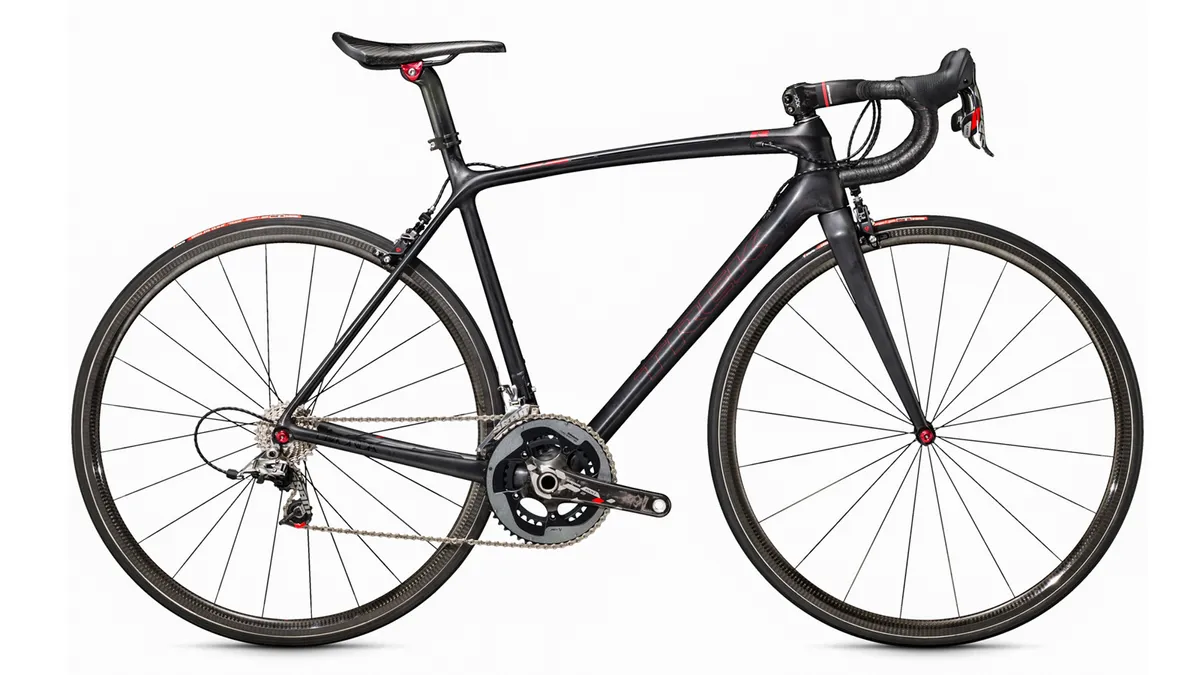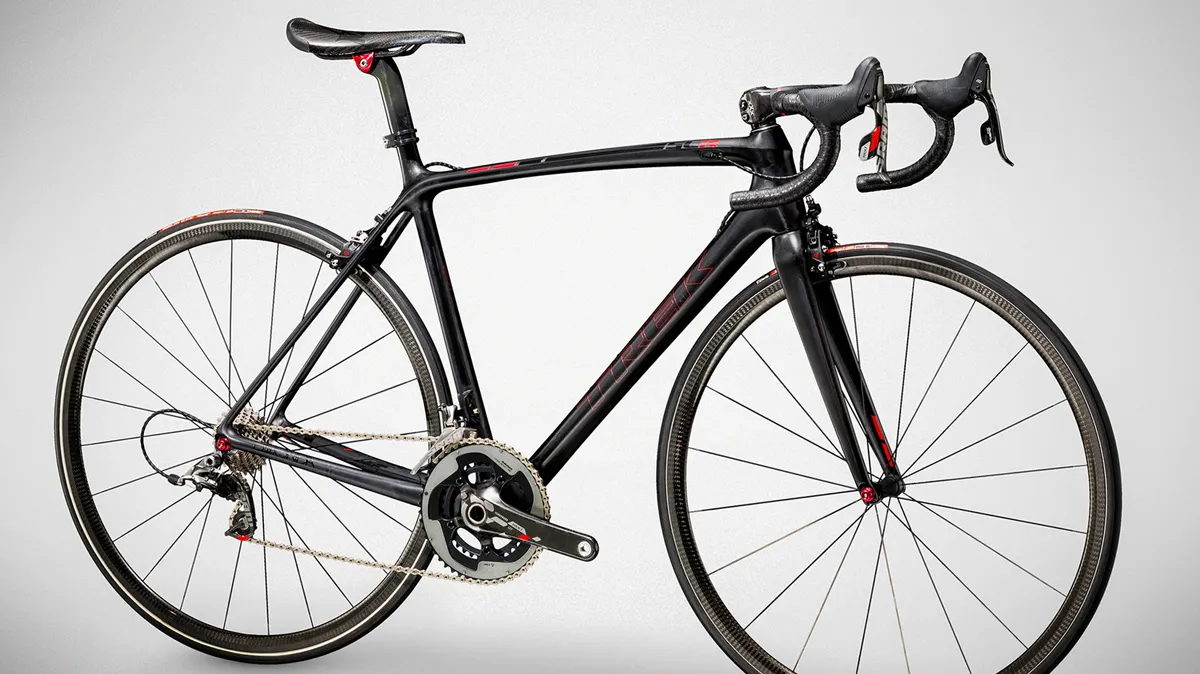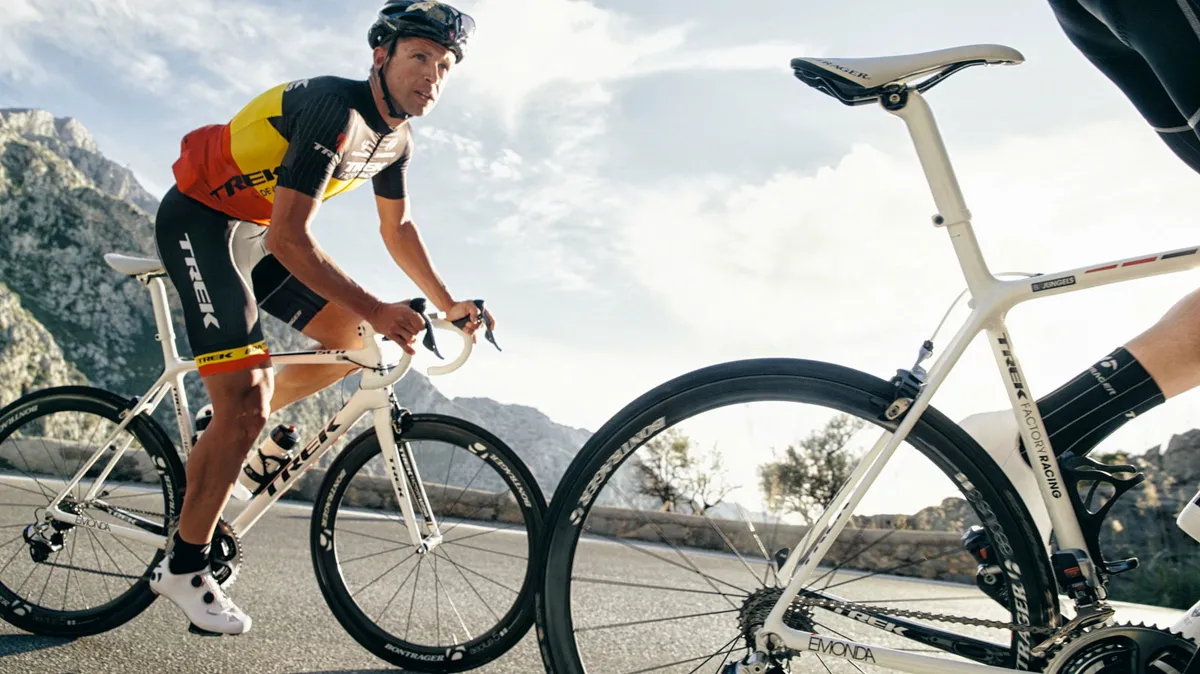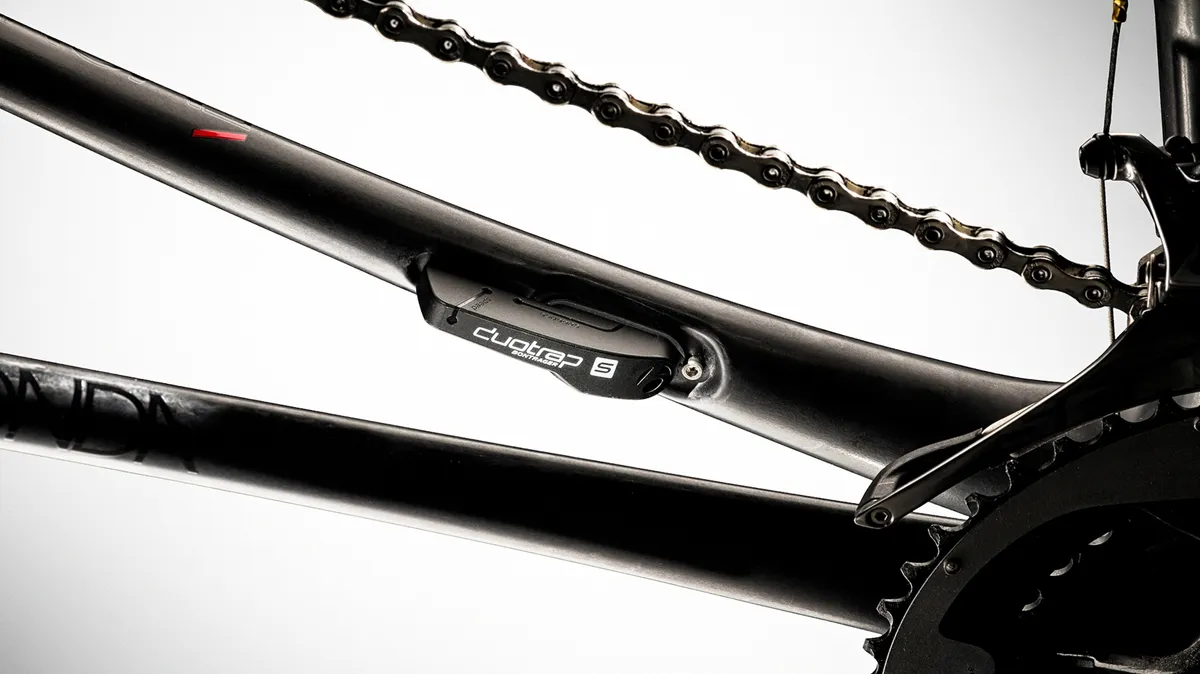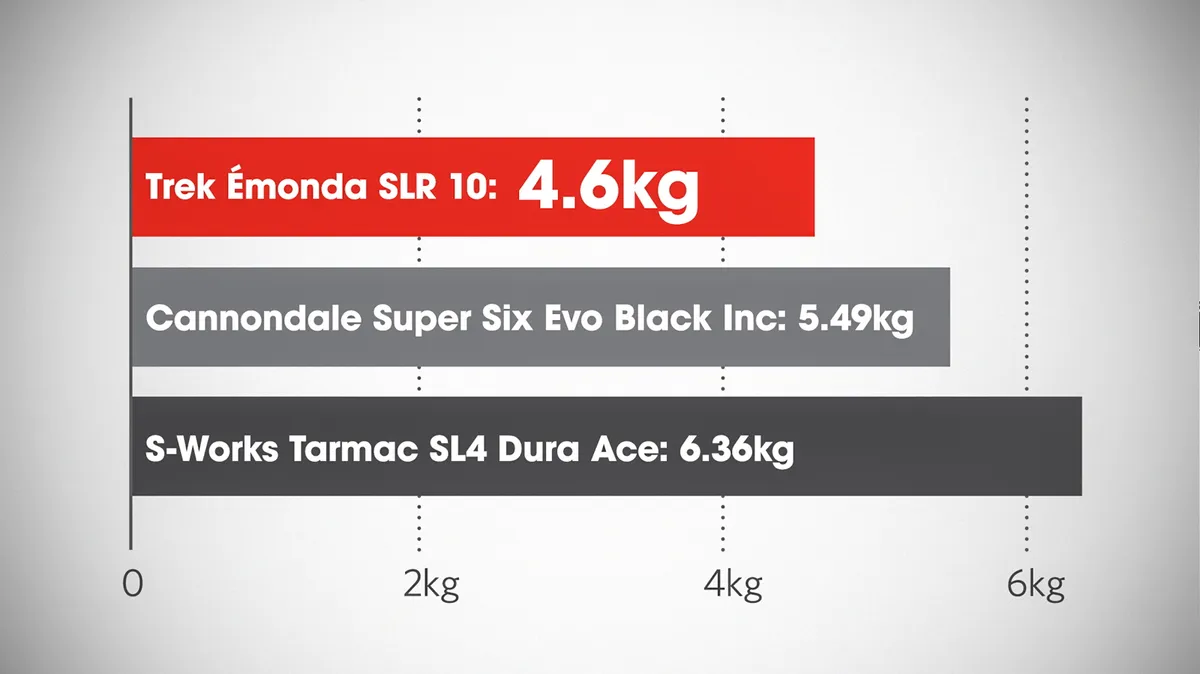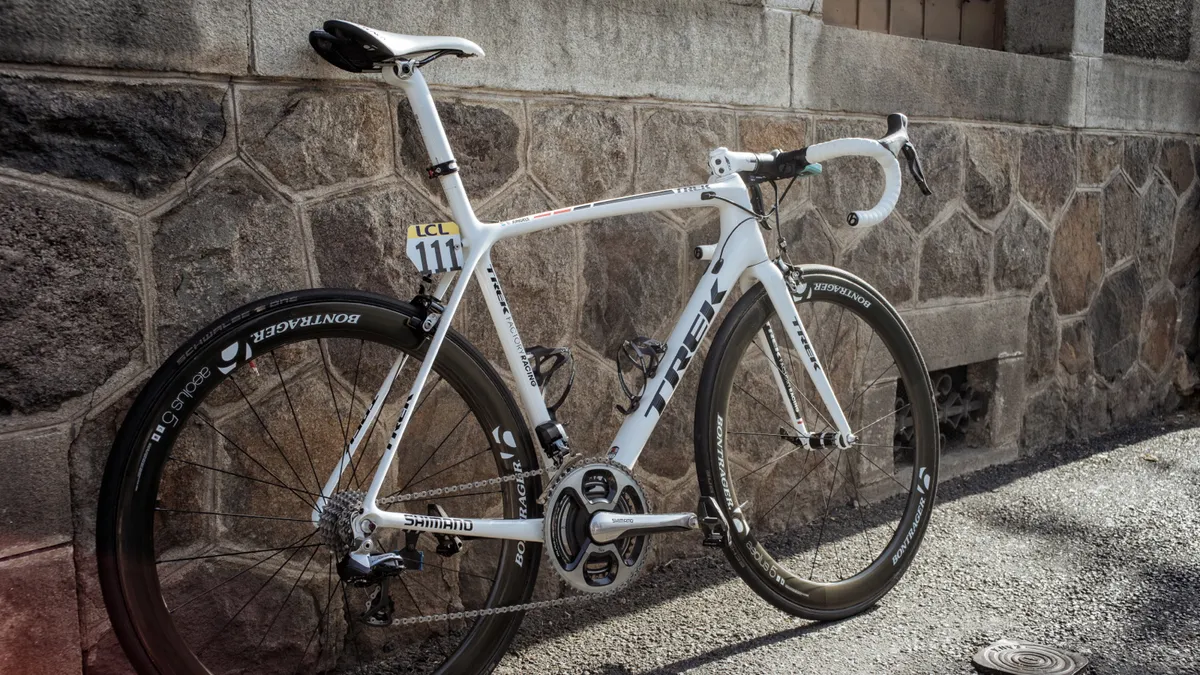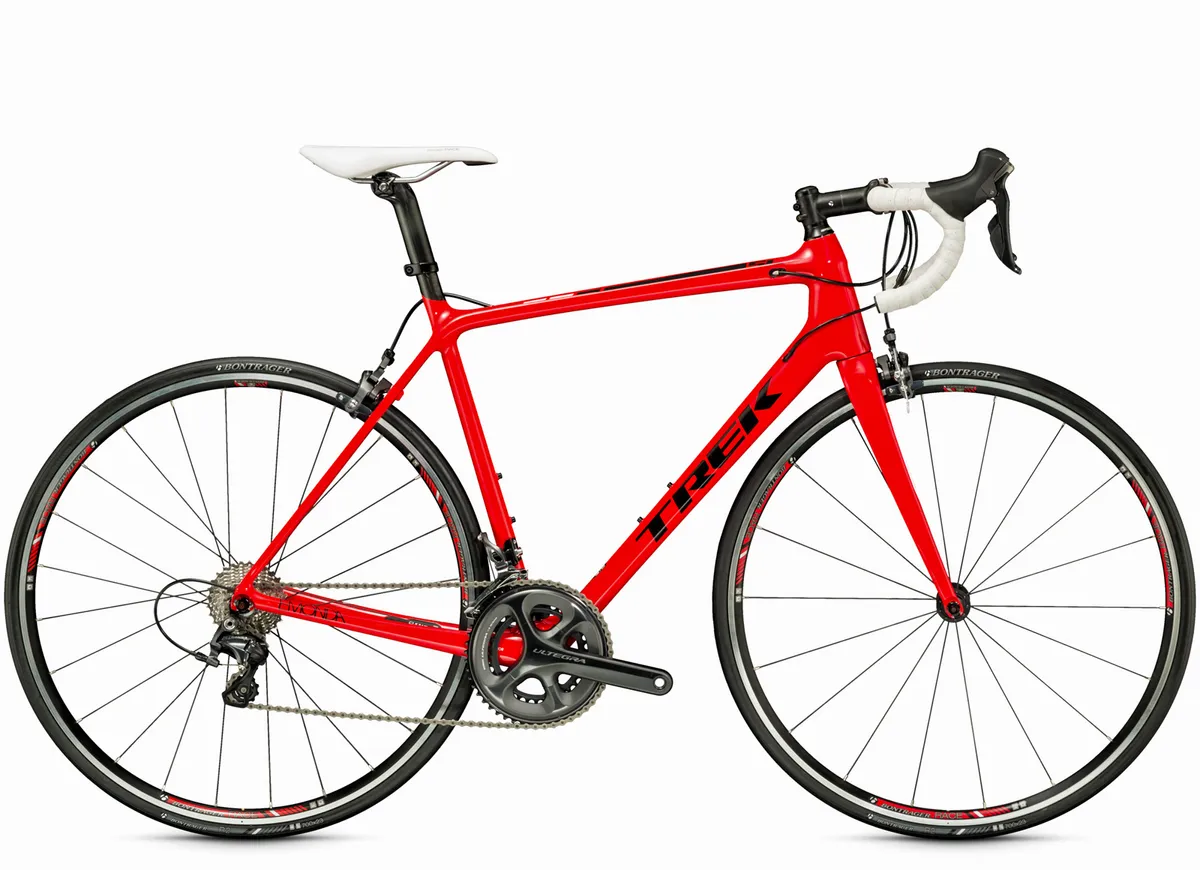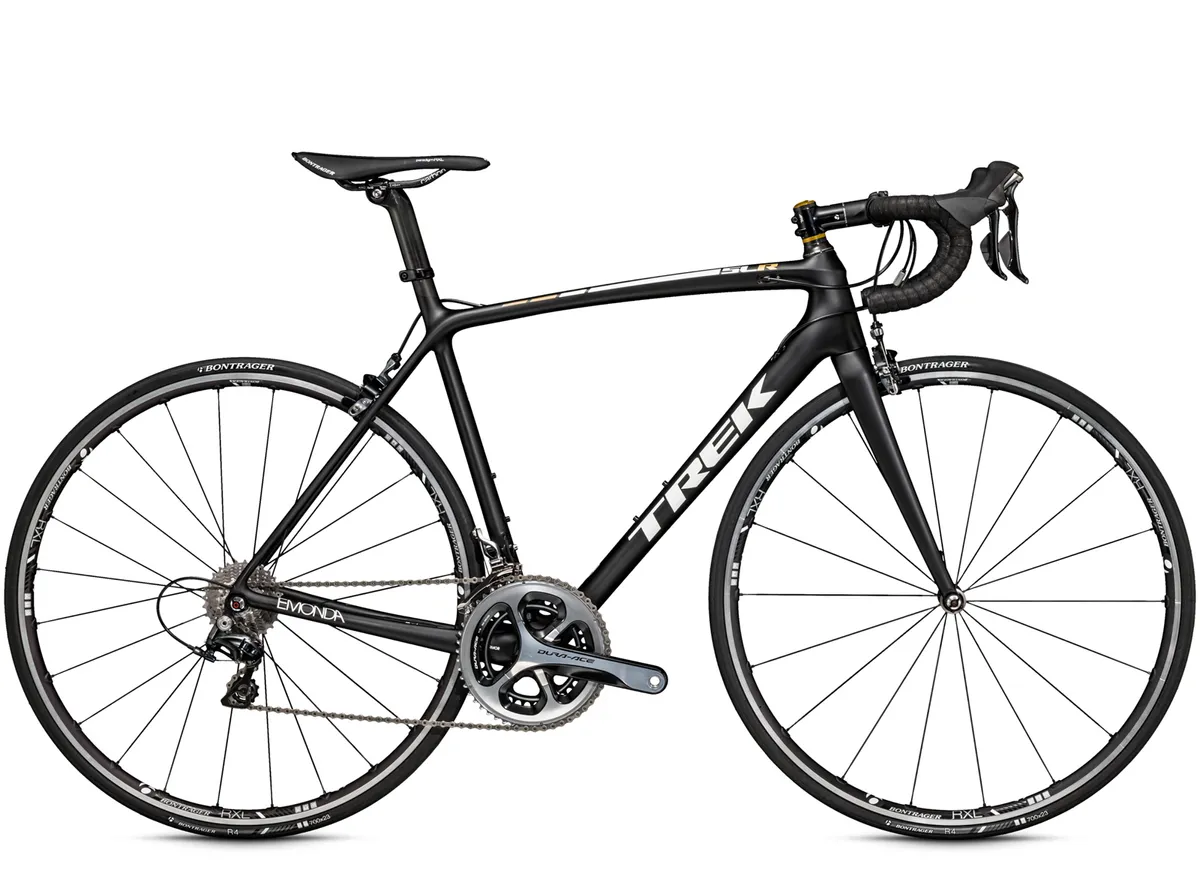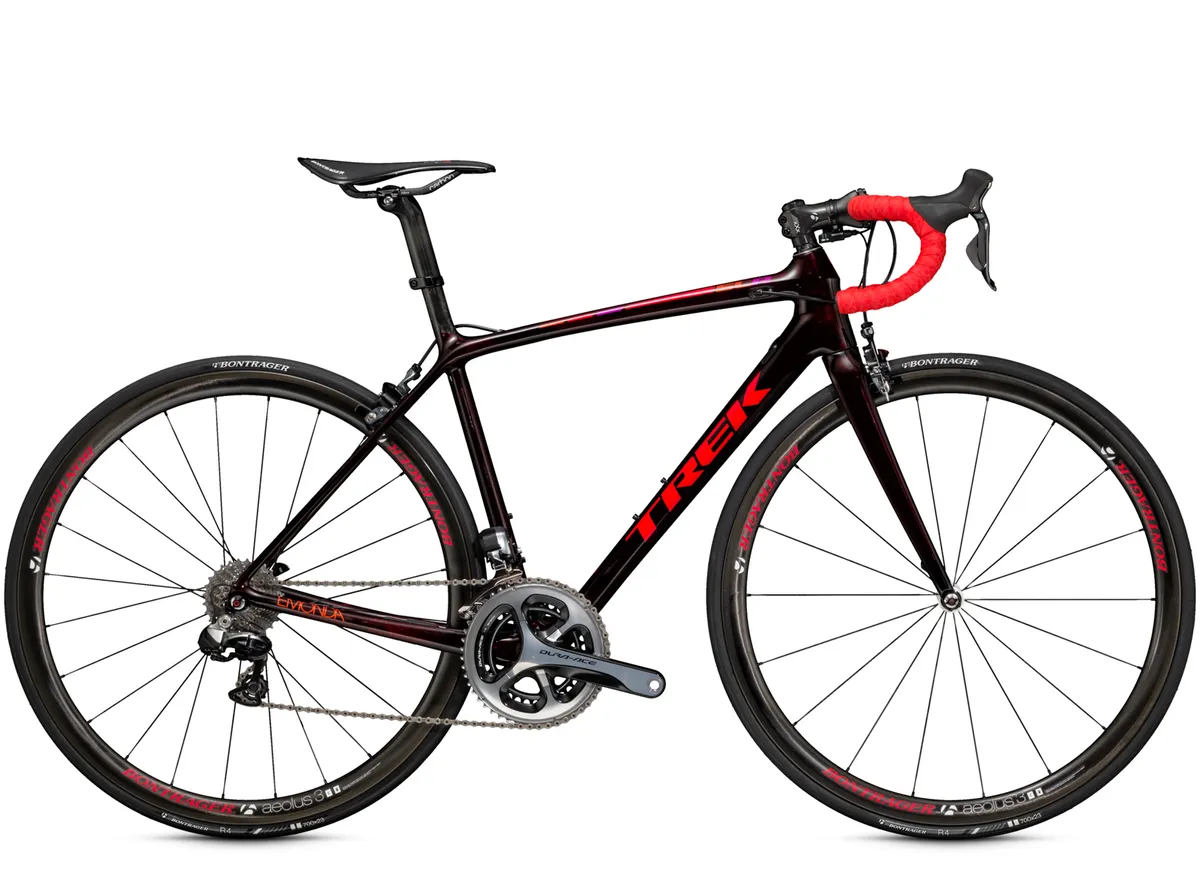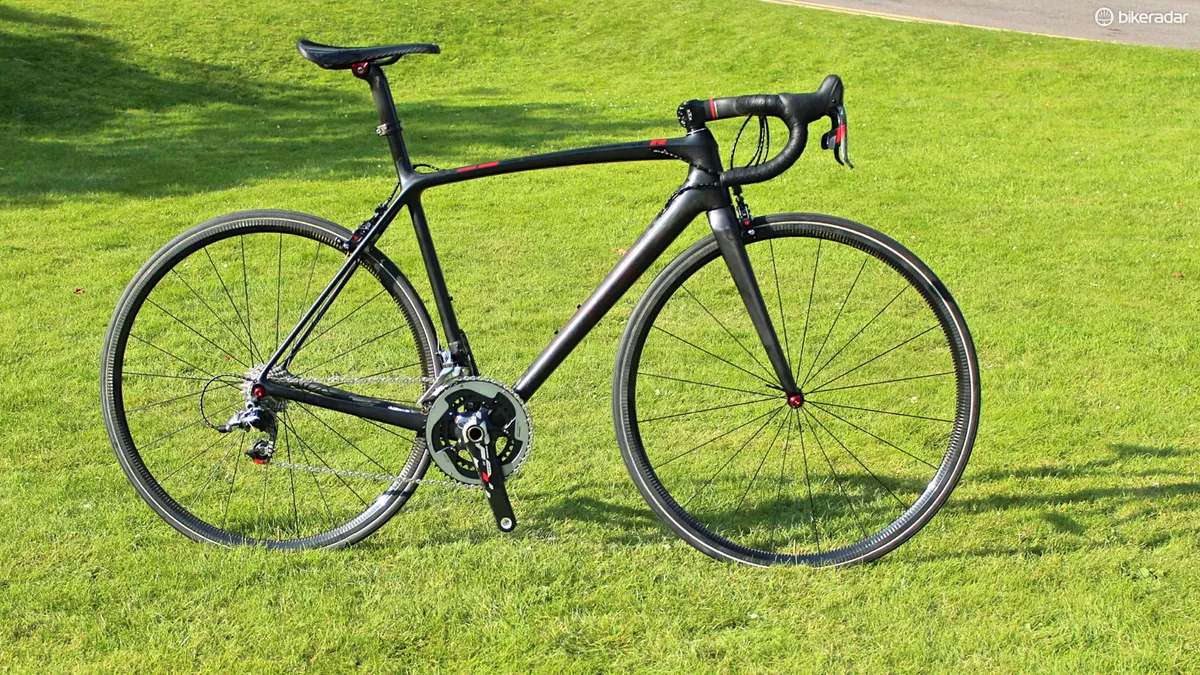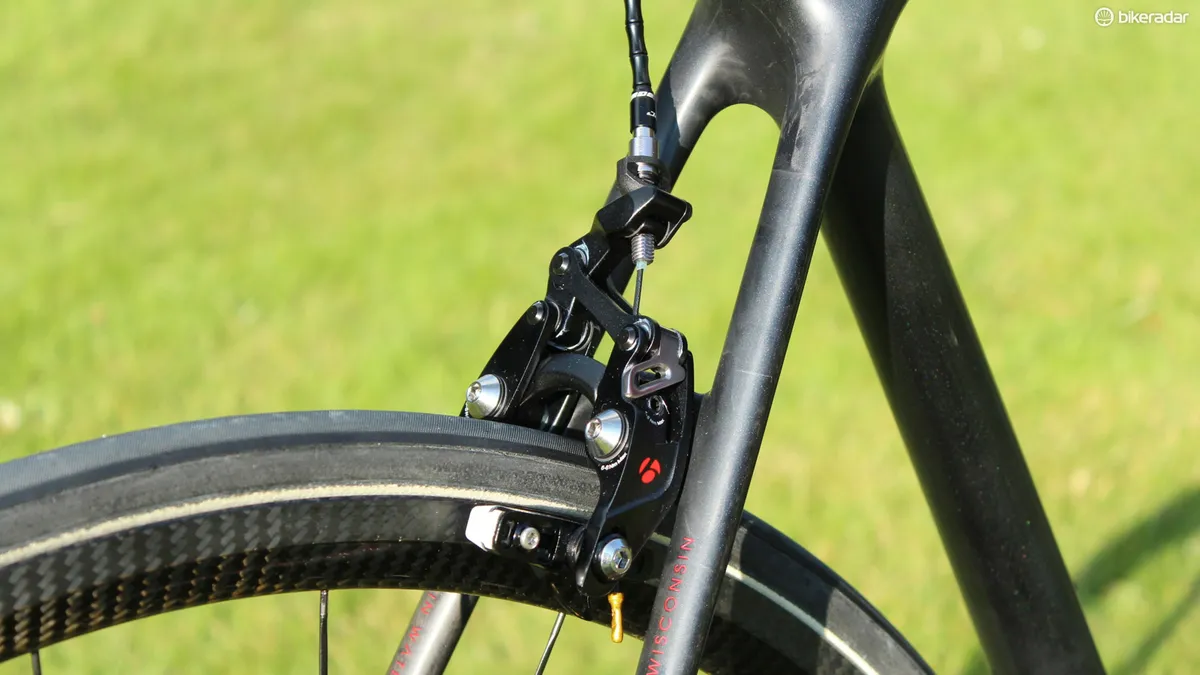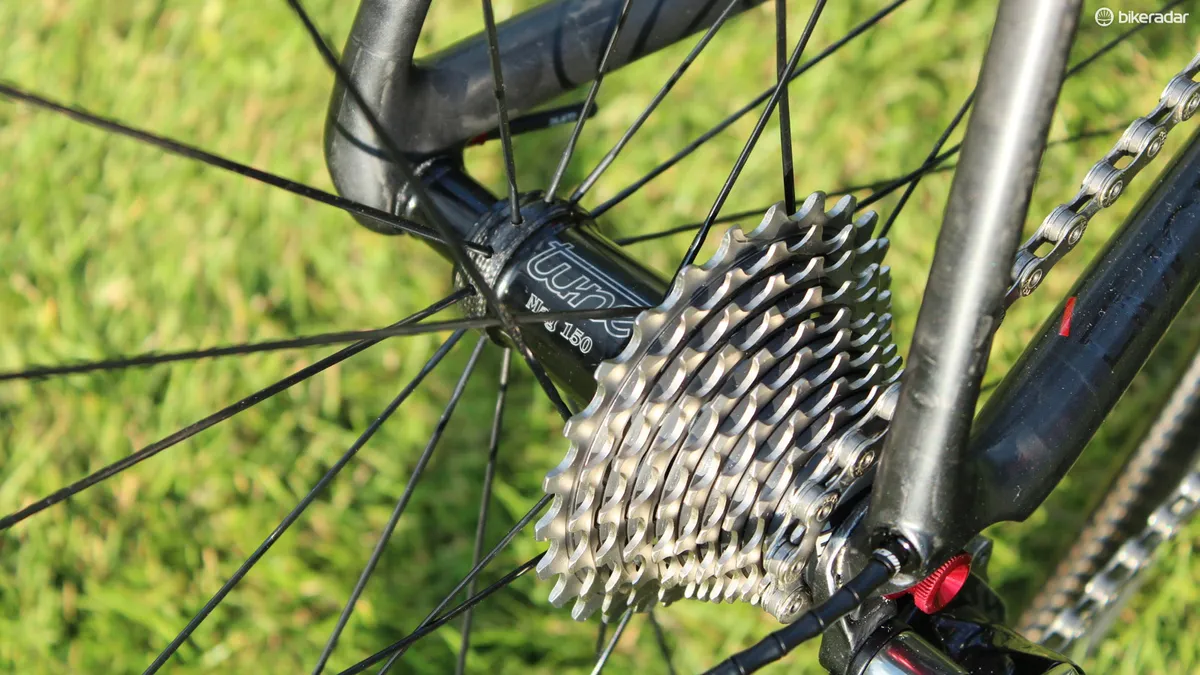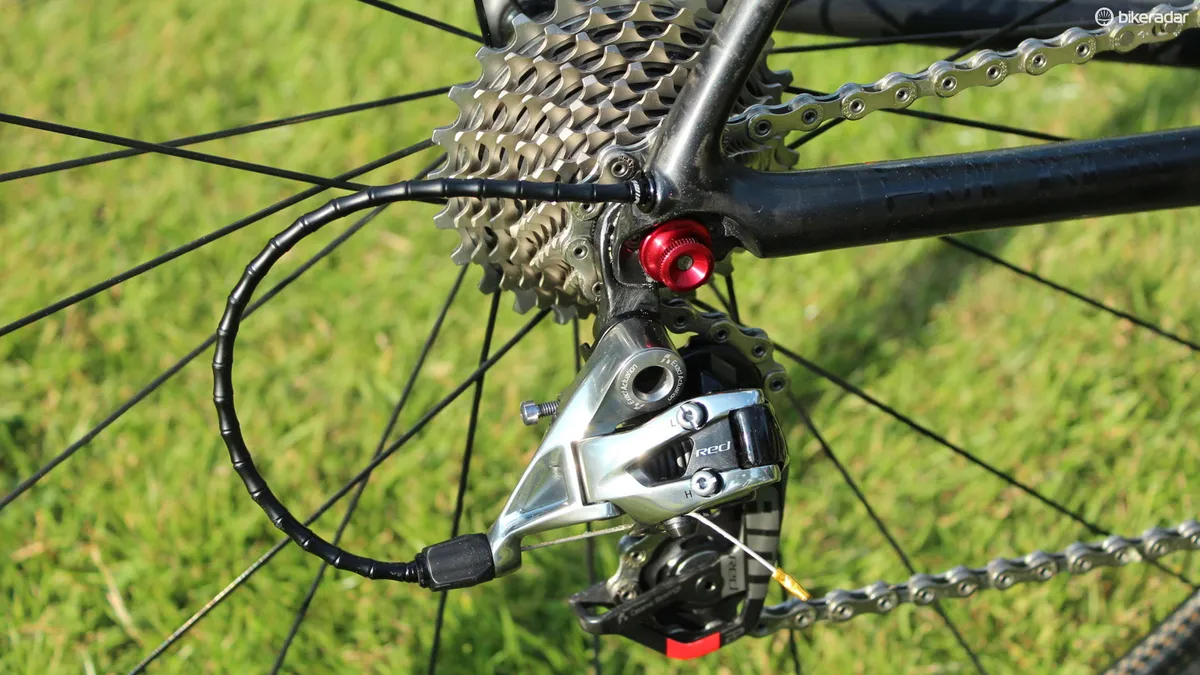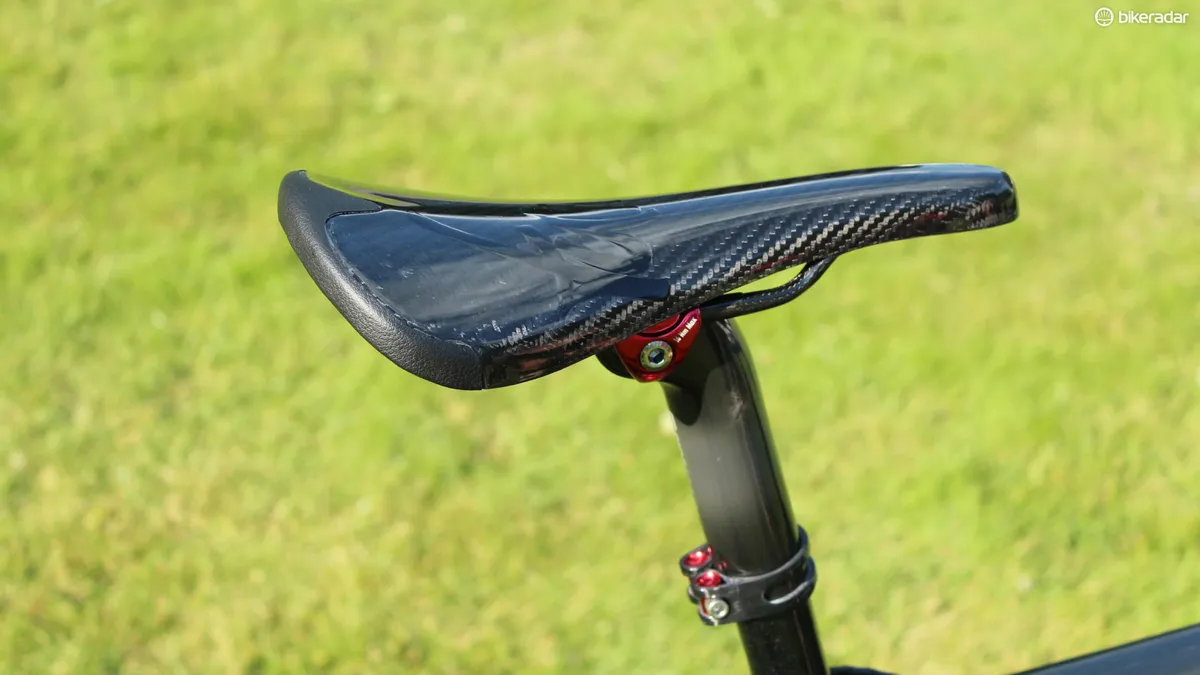Although the bike had been seen at the Criterium du Dauphiné, the Trek Émonda was officially launched just days before the Tour de France. At a claimed 690g for a painted 56cm frame, the hyperlight road machine builds up to a 4.65kg/10.25lb complete bicycle thanks in part to new Bontrager integrated components like an XXX bar/stem combination and Speed Stop direct-mount brakes.
There are three models of the new Trek Émonda, from the SLR 10 that is made in Waterloo, Wisconsin, down through the SL and S models, plus women's WSD builds. Pricing ranges from US$1,429/£1,200 up to US$15,749/£11,000 for the Émonda SLR 10. Each base model uses a different level of carbon, with the SL and S getting progressively heavier while retaining the same design and shape.
Check out more of our Trek 2015 coverage.
Trek emonda: a 10lb road bike
Video: Trek Emonda
Trek's goal from the outset of the project, 30 months ago, was to build the lightest production road bike on the market. Besides being incredibly light, the bike also had to be an elite-level race machine. After years of testing, using pro-rider feedback, strain gauges, accelerometers, and countless iterations of geometry and lay-up prototypes, Trek engineers believe they have succeeded in that goal.
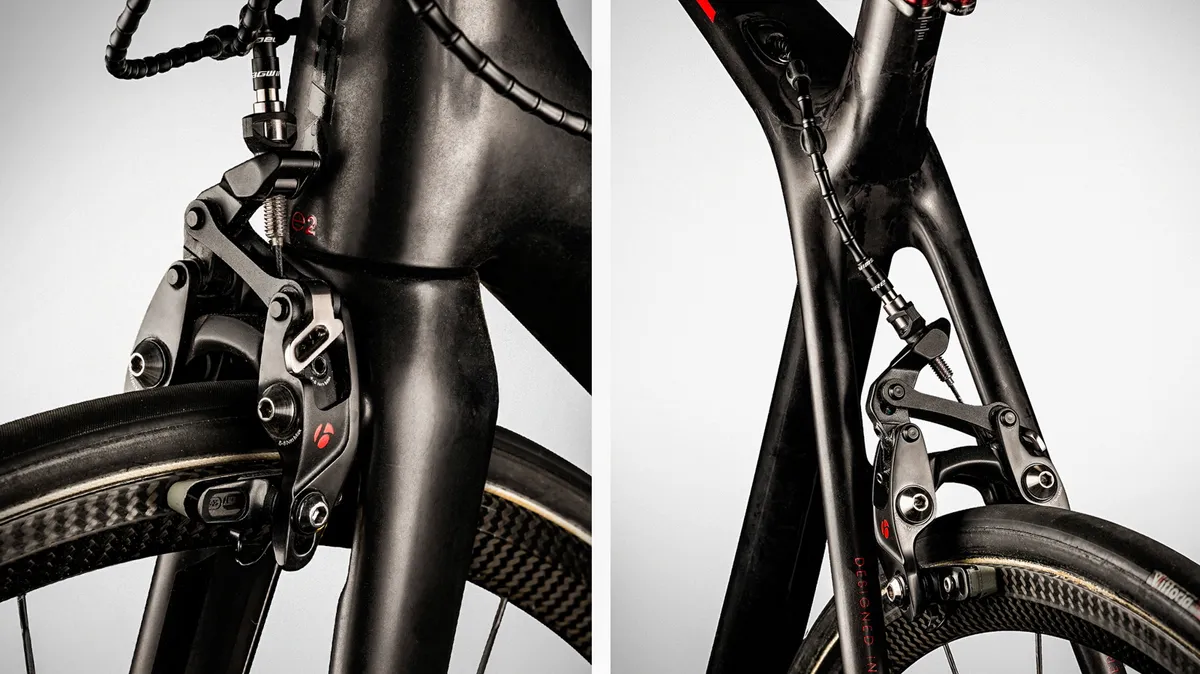
Trek road bike manager Ben Coates said that Trek was targeting Cannondale's SuperSix Evo Black, with its claimed 725g frame weight — "We weighed one at 710g," he said — but pointed out that a Specialized S-Works SL4 is 897g — "and their new Tarmac is even heavier," he noted.
To achieve the astonishing 4.65kg/10.25lb complete weight, Trek built up the SLR 10 with Tune Skyline tubular rims, MIG45/MAG150 hubs and Komm-Vor Plus saddle, a SRAM Red 22 group with ceramic bearings, a Cane Creek AER headset, Jagwire's new sectioned housing, Vittoria Crono CS 22c tubulars, and Bontrager XXX integrated bar/stem and Speed Stop direct-mount brakes.
For the shape of the XXX bar/stem, which has a 129mm drop and 93mm reach, Trek consulted a variety of riders from pros to everyday Joes, Coates said.
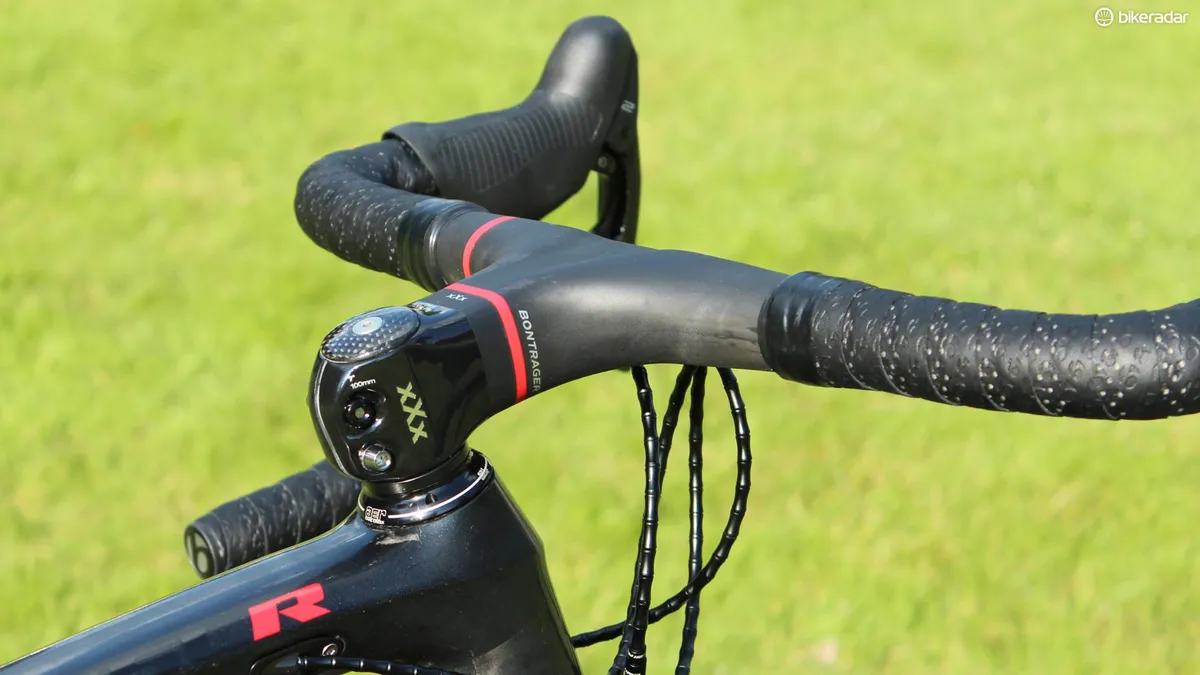
"We found that for the vast majority of riders, the variation in bar rotation is very small," he said. "A few guys, like Jens Voigt, have their bars really rotated. But for the most part, it is the lever position that dictates how the bar feels."
Eliminating the traditional mechanical junction between bar and stem reduced the weight by about 75g over a comparable system, Coates said.
Now Trek has three road bikes: the Domane endurance bike, the Madone race bike and this new Émonda climbing machine. When BikeRadar asked for an apples-to-apples comparison on how the latter two compare, Coates declined to give specific numbers, but said they are quite similar in stiffness and compliance.
"In bench tests they are essentially the same," Coates said. "The Madone has a stiffer head tube, but it is not as stiff in the chain- and seatstays. The compliance numbers are virtually the same."
In terms of geometry, the Émonda is a little shorter in the front center, and a little longer in the chainstays than the Madone.
With the exception of the Shimano 105 bikes, the Émonda bikes are available in shops now.
For more details on specific Émonda models, visit trekbikes.com.
BikeRadar will be testing an Émonda on part of the Tour de France stage 1 route Wednesday, so check back soon for a first ride review.
